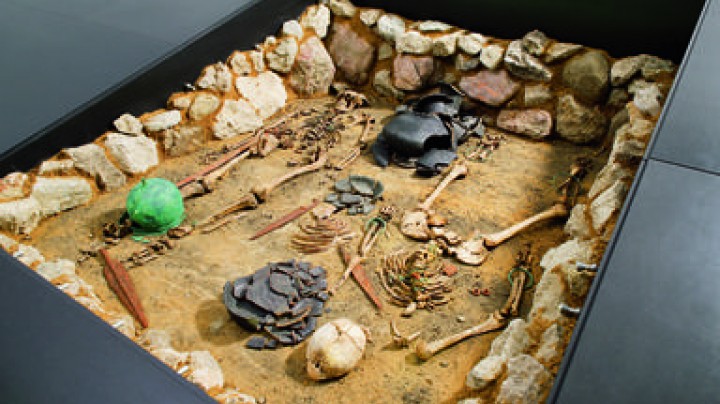
Museum of the Celts
For forty years now the museum has been exciting the crowds with its sensational Celtic finds from one of the most important archaeological sites in Europe.
Celtic settlers arrived on Dürnberg 2500 years ago. Their continual settlement until the birth of Christ has cast up information on the development of dress, arms and funeral rites. Visitors can learn about the conditions of life and work of the Celtic miners, also about the Celtic death cult, and marvel at the wealth of the Celts gained through salt. Precious materials acquired through trade and barter and handicraft skills are the main features testifying to the artistic sensibility of these people.
The mining galleries planned by the Celts have in addition preserved organic materials like wood, leather and fabric. The graveyards they left are still a treasure trove of breathtaking jewellery, artfully decorated weapons and elaborately formed vessels of ceramic and bronze.
However, salt mining stopped for a long time at the latest with the advent of the Romans. It took over 1200 years for the salt to be rediscovered in the Durrnberg, this time as the foundation of the wealth of the Salzburg archbishops. The top floor of the museum houses the princely rooms, the Fürstenzimmer, with 74 original oil paintings from 1756; it also has a display of working tools and apparatus, models and documents from this turbulent time.
Visit the Museum of the Celts and bring your parents, brothers and sisters. and friends!
A visit to the Museum of the Celts is an experience for the whole family. There is so much to discover and marvel at – and, what is more, you can do research yourself, make things and play together. A special highlight is the bone detective laboratory where you can find out about the work procedures of prehistoric anthropology.

Daily from 9 am – 5 pm










